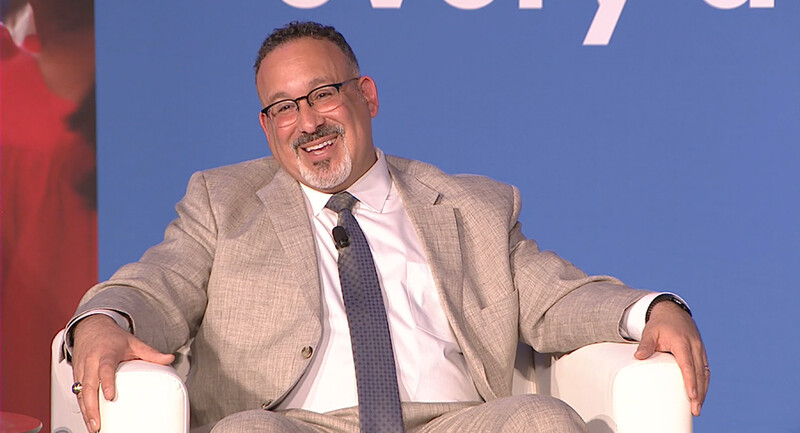Schools around the world today are attempting to meet three challenges: subpar academic achievement, chronically low attendance rates, and poor student behavior. While some schools are making progress on these fronts, too many are still struggling with fragmentary efforts to address them. In fact, there are significant interconnections between these challenges, and I’d argue that they should be addressed as a whole through the discipline of systems thinking.
Peter Senge, one of the world’s leading advocates of systems thinking, once explained to me that while the approach can be over-complicated, systems thinking comes down to two things. First, recognize the connections among different parts of the system. For example, the root causes of poor achievement, challenging behavior, and chronic absenteeism might be rooted in the trauma of students and families. Second, admit what you don't know or can't control. While we can influence student motivation during the day, there are many other factors, including food insecurity, preoccupation with social media, and access to drugs and alcohol, that educators do not control. There are always unforeseen causes that influence educational results. Our time is better invested in factors we can influence and control.
Underlying Causes
Too frequently I have heard teachers and school leaders say, “We can’t improve achievement until we get attendance and behavior under control.” This complaint ignores the fact that an underlying cause of chronic absenteeism is hopelessness and despair by students who know that failure is inevitable. Many of these “guaranteed” failures are the result of toxic grading policies, such as the use of the average, that punish students in May for their mistakes in February. Last spring, I heard a high school teacher say, “There’s no way this kid is going to pass the class.” If this kind of grading system, one that forces students to fail even as they are making progress and teachers to feel like they have no way to help them, is not what the late Rick DuFour called “educational malpractice,” I don’t know what is.
Moreover, a leading cause of student failure is missing homework, yet there are schools that have dramatically reduced the failure rate—and improved attendance—by shifting practice work to be completed in-class rather than at home. This does not require a five-year study of grading policies or 20-page board reports. It just requires courageous leaders to do two things: ban the average and insist that when determining the final grade, it is performance, not practice, that counts.
What leaders must do is to tackle the policies that undermine achievement and thereby lead to poor attendance and behavior.
Certainly, there are other things that leaders can do to improve attendance. We have seen schools, including high-poverty schools, move from attendance rates hovering around 50 percent to mid-90 percent levels. It’s not perfect, but it shows what can be done. These schools built closer relationships with families, often with home visits. They offered improved transportation options, made morning “wake up” calls, and used personal calls within the first 20 minutes of the school day to contact every absent or tardy student. All these actions are within the control of leaders and teachers, and they are especially powerful if combined with more supportive academic policies.
While I have heard the complaint that “parents just don’t value attendance,” that is perhaps because parents themselves faced guaranteed failure policies that rendered going to school a fruitless endeavor. There remain many school systems in which 10 days of unexcused absences will lead to an automatic failure. Under such a policy, why would any student with 10 absences continue to come to school?
The Discipline Connection
J. Stuart Ablon of Harvard Medical School has amassed the best set of peer-reviewed evidence on improving behavior. He notes that the discipline practices he sees in most schools rely heavily on arbitrary punishment, with little effort to work collaboratively with struggling students to develop their behavior skills. This obviously does little to help in boosting attendance rates. Moreover, there are enormous differences in the way school discipline is administered based on a student’s gender and ethnicity. One of the most common causes of office referrals, which too often lead to suspensions and, ultimately, drop-outs, is “disrespect.” A respectful challenge to every teacher and school administrator is to ask, “What does this word mean?” If we were talking about any other set of rules, such as those on the athletic field or playground, the rules would be consistent. But in the classroom, “disrespect” means different things to different people. When students don’t know the rules of the game, they stop playing it.
Systems Thinking in Action
We know that achievement, attendance, and behavior are connected. We also know that there are positive actions that educators can take—actions that are within their control—to address these challenges holistically. This sort of systems thinking must become a central priority in education, given the enduring health-and-safety consequences for students who drop out of school: a lifetime of poverty and unemployment, excessive use of the medical care system, and greater involvement in the criminal justice system. This is not a one-year problem but a fifty-year problem. The economic, social, and moral costs rest on all of us who fail to take decisive action to make student success a health and safety issue.
The economic, social, and moral costs rest on all of us who fail to take decisive action to make student success a health and safety issue.
Here are three practical things school leaders can do:
- Do not separate initiatives in achievement, attendance, and behavior—they are all inter-related. If the behavior and attendance committees or task forces at your school are operating without knowledge of the impact of achievement on their work, their efforts will be in vain.
- Stop tolerating policies that lead to automatic failure. Here is a way to conceptualize this: If you would not tolerate corporal punishment—teachers beating students into submission—then do not tolerate academic corporal punishment, practices that lead to a regime of punishment that simply does not work. If threats of failure, point deductions, and zeroes were effective, then by now all student work submitted would be perfect and on time. There is no teacher on the planet who makes this claim.
- Decide what’s worth fighting for. Leaders and teachers cannot fight every battle, and their efforts will not be resolved with endless workshops, speeches, and book studies. Take practical steps to improve opportunities for academic recovery and success for struggling students. (Banning the average and punitive homework policies are two recommendations.) Doing this will likely have a positive effect on attendance and behavior as well.
Teachers and school leaders continue to be overwhelmed by the expectations that they can address the intellectual and emotional impacts of school closures associated with the pandemic. The answer is not the pabulum of “working smarter,” but rather a recognition that teachers and school leaders need time, focus, and systems thinking to address the essential challenges of academic achievement, attendance, and behavior.








